 username@email.com
username@email.com
In this lesson, you will review the structures, functions, and defenses of the immune system of the human body. You will also review immunity and disorders.
The immune system is the body’s defense against invading microbes and foreign cells, as well as against the body’s own cells that have gone bad. The immune system consists of cells and some molecules. This system has no organs; instead, it uses the pathways of the lymphatic and circulatory systems to transport immune system cells. These cells go hunting for foreigners that do not belong in the body. They attack these invaders and disable, kill, or remove them from the body.

Which of the following is one nonspecific defense against invaders to the body?
D is the correct answer. Choices A and C are specific defenses. Choice B is active immunity.
The lymphatic system works in conjunction with the immune system. The main function of the lymphatic system is to keep the body healthy. The tubes that carry lymph fluid throughout the body are the lymphatic vessels. These vessels are structured similarly to the circulatory system’s veins. Lymphatic vessels originate as capillaries in spaces between cells. They are found throughout the body, except in avascular tissue, the spleen, bone marrow, or the central nervous system.
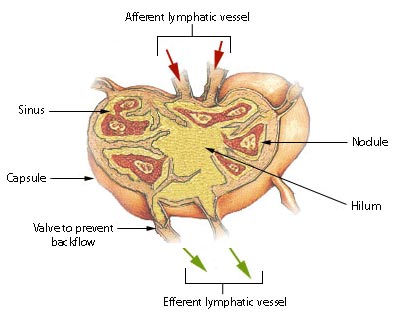
Extra tissue fluid surrounds every cell of the body. Excess tissue fluid is call lymph when it is absorbed by the lymphatic vessels. Lymph moves through the lymphatic system, carrying lymphocytes (white blood cells) and a few red blood cells and fat particles. Lymph fluid is prevented from flowing backward by valves; therefore, the system is a one-way track. The lymph is moved by the squeezing action from the movement of arms, legs, and other skeletal muscles. Lymph passes through lymph nodes where it is filtered to remove microbes and impurities.
The lymph nodes are oval-shaped organs that are located in various places along the lymphatic vessels. These nodes are composed of lymph node masses of reticular connective tissue and white blood cells. The nodes act as sort of a net to trap bacteria or other harmful substances. As lymph passes through the nodes, it gets strained and cleaned before being returned to the bloodstream. When the nodes get full they enlarge, which is a sign that they are doing their job of cleansing the blood. The lymph nodes are the only organs that filter lymph. Purified lymph returns to the bloodstream via the circulatory system’s veins.
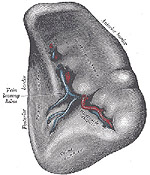
The spleen is a ductless, vertebrate gland located on the left side of the abdomen, right underneath the diaphragm. It is divided into lobules containing red pulp and white pulp. Red pulp contains red blood cells and white blood cells, including lymphocytes and macrophages. White pulp contains only lymphocytes and macrophages and no red blood cells.
The spleen serves to filter blood, with the lymphocytes and macrophages filtering out microbes and other foreign material. Excess blood is also stored in the spleen. When the body needs an increase in blood flow, the spleen releases blood.
The thymus gland is located just behind the sternum, overlaying the heart and straddling the trachea. The thymus is large in youth and diminishes in size with age. This gland produces the hormone thymosin, which stimulates the differentiation and maturation of T cells.
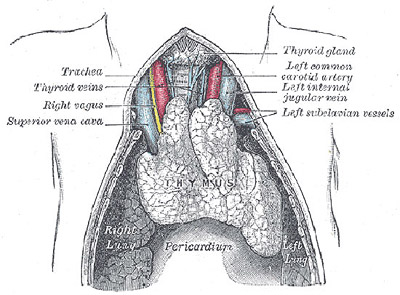
Which of the following produces thymosin?
A is the correct answer. The spleen is a gland. Lymph is a fluid. Tonsils are lymphatic tissue.
The nonspecific defense response of the human body is a general response, no matter the invader. The body’s inflammatory reaction is a nonspecific response.
Scrapes, cuts, burns, skeletal breaks, and bacterial, viral, or fungal invasions can all instigate an inflammatory response. When an inflammatory response is activated, it localizes the damage, removes damaged cells, and prepares for tissue restoration.
Body tissue injury usually includes capillary injury. When capillaries are injured, the capillary releases the chemical histamine. This chemical dilates the capillary, allowing a larger volume of blood to flow through. This makes the injured area look red. Increased blood flow also delivers more immune system cells to fight any microbes present.
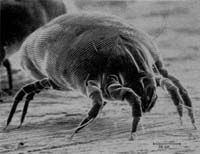
Dust Mite
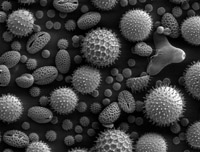
Plant Pollens
With the release of histamine also comes the chemical bradykinin. This chemical is responsible for the brain interpretation of pain and the swelling associated with an injury. Bradykinin also increases extra tissue fluid moving through the injury and increases the permeability of the surrounding capillaries, thereby delivering neutrophils and monocytes as the first line of defense against invaders. Neutrophils consume bacteria through a process call phagocytosis. Phago- means “eating” and cyt- means “cell.” Neutrophils surround bacteria and split the bacteria apart with enzymes. Monocytes grow into macrophages, which hunt and consume microbes. Macrophages also initiate the production of more white blood cells.
The complement system is complex and works like a chain reaction. The activation of one complement protein activates another one, and another one, and so on. When microbes are detected, the complement system chain of events occurs. The complementary system is driven by several complement proteins working together. Some are activated and produce additional proteins that degrade microbes. Others instigate chemical release that serves as signals for inflammation and phagocytosis. Still another group of complement proteins mark microbes for death, which attracts phagocytes.
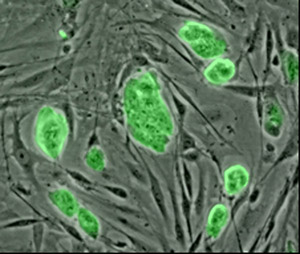
The immune system has a connection with both the skeletal and circulatory systems. White blood cells are created in the red marrow located at the end of long bones, and in the ribs, skull, pelvis, spinal column, clavicles, and sternum. Once created, white blood cells travel throughout the circulatory system.
Specialized cells, called multipotent stem cells, within red bone marrow can potentially differentiate into specific types of blood cells, including white blood cells. There are five types of white blood cells that mount attacks on invaders.
When these cells are stained, the tiny granules in their cytoplasm can be seen easily.
Basophils release histamines. These cells comprise approximately one percent of all white blood cells in the body.
Eosinophils phagocytize antigens and antibodies before splitting them apart. These cells comprise approximately one to four percent of all white blood cells.
Neutrophils phagocytize bacteria. Forty to seventy percent of all white blood cells are neutrophil cells.
The tiny granules in the cytoplasm of agranular leukocytes cannot be easily seen when stained.
Monocytes develop into macrophages. These cells comprise approximately four to eight percent of all white blood cells. Macrophages phagocytize both bacteria and viruses. These cells are involved in the inflammatory, antibody-mediated, and cell-mediated responses. Macrophages play an important role in antigen presentation by engulfing the invader and then putting its antigens on the invaders surface to “present” to T lymphocytes. Macrophages also release proteins that activate T cells to release chemicals that will, in turn, transform macrophages into activated macrophages with a license to kill.
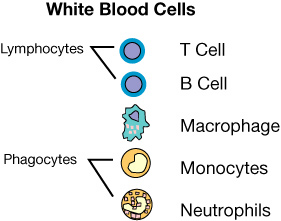
Killer T Cells are also known as cytotoxic T cells. These are involved in the cell-mediated response. They directly attack and kill host cells harboring a virus. Killer T cells remove infected cells to protect uninfected cells.
Helper T Cells are involved in both the antibody- and cell-mediated responses. These cells produce a compound cell, interleukin, which stimulates the rapid division of B cells and killer T cells.
Suppressor T Cells prevent any unnecessary immune responses. These cells come into play when the invader has been destroyed or inactivated. They release chemicals that inhibit the helper T cells, and so suppress the formation of antibodies and/or killer T cells.
The largest majority of white blood cells are
The correct answer is D. Neutrophils comprise 40 – 70 percent of white blood cells. T lymphocytes share 20 – 45 percent with B lymphocytes. Basophils total approximately one percent and monocytes comprise four to eight percent.
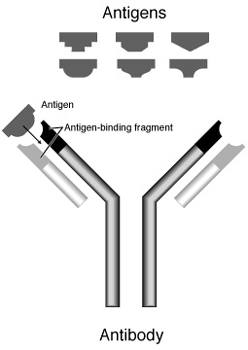
Mammals are inherently born with a level of immunity. This is natural passive immunity. While in the womb, a fetus receives antibodies from its mother. Once born, additional antibodies are delivered through breast milk. After a few months of life, the body begins making its own antibodies.
Before vaccines, the body got sick in order to boost the immune system with antibodies. Bodies that built up antibodies and survived diseases developed a natural immunity and were more likely to reproduce and pass their genetic material to future generations.
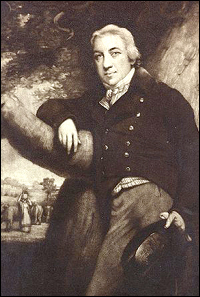
Edward Jenner
The immune system has been given a boost through medical research and technology. Scientists developed vaccines to give the immune system a head start for forming antibodies against certain antigens. This is active immunity.
Vaccines work with the immune system by allowing the production of memory cells. During the first exposure to an invader, certain B and T cells are made and retained. This is the primary immune response. These cells are not used directly in any attacks; instead, they circulate through the bloodstream and are ready to aid in any subsequent attacks by the same type of invader. Should a second attack come, the specific antibodies are ready to be quickly mass-produced. This is the secondary immune response.
Vaccines are mixtures of antigen material, such as dead microbes, live microbes that will not cause infection, or proteins that the body will recognize as foreign. Attenuated virus vaccines are designed to be recognized as antigens without causing infection. The virus might look the same, but it does not act the same. Killed or weakened virus vaccines are derived from the actual viruses. Either heat or chemicals are used to weaken or kill the virus. These vaccines are not as effective as attenuated virus vaccines. Inactivated by-product vaccines are made by using the by-products of a virus or bacteria. These by-products are flagged and used to tag invaders, if necessary. For example, the vaccine for tetanus is made from the by-products of the bacteria Clostridium tetani. Genetically engineered virus vaccines use bacteria to make some of the proteins found on the outer covering (capsid) of the virus. Many copies of the outer proteins are made for injection. This is just a copy of the virus housing. Although it does not adversely affect the body, the body does respond as if the virus was real. Examples include vaccines for hepatitis B, rabies, and the flu.
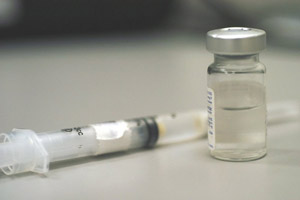
Vaccines can be administered orally, nasally, or by inoculation. Inoculations are either intramuscular or subcutaneous. A single vaccination usually does not provide lifelong immunity; therefore, booster shots may be required for certain illnesses.
It is because of vaccinations that diseases, such as measles, mumps, rubella, smallpox, and polio, are either partially or entirely eradicated from existence. For example, rabies was a serious community problem 75 years ago and now we rarely hear of rabies outbreaks. Such diseases have been limited due to the use of vaccinations and what is called group or herd immunity. The few individuals not immune are at less risk of contracting a disease because the majority is immune and incapable of carrying and transmitting the disease.
Effective vaccine development has been hindered by the evolutionary properties of many viruses. Viruses are quite capable of mutating with each generation. Constantly changing viruses outpace vaccines that previously conferred immunity.
Vaccines injected into the body produce
The correct answer is C. A secondary immune response comes after a second attack of an invader. Lifelong immunity is very rare; vaccine boosters are often necessary. Viral mutations occur during viral reproduction.
Sometimes the general attack used in the nonspecific immune response is not enough to stop the spread of an invader. When this happens, the host becomes ill and the immune system kicks into overdrive to protect the body. There are three ways the specific defense system differs from the nonspecific responses.
The specific defense response happens after the host has been exposed to the invader. Once exposed the body creates specific antibodies.
This first-time encounter with an antigen elicits a primary immune response from lymphocytes and their products. There are two types of primary immune responses.
The antibody-mediated immune response targets extracellular organisms, such as bacteria, viruses, fungus, protozoa, and other parasites. For an antibody to bind to an antigen, the antigen must be present. An antigen cannot be found if the invader is already in one of the body’s own cells. The following takes place in a bacterial invasion.
All B cells have the same genes for coding the amino acids in the chain but each maturing B cell shuffles the genetic code into one of millions of possible combinations, so the sequence of the amino acids is shuffled. This changes the order of the amino acids, which changes the shape of the protein. Because of this ability, B cells can give rise to virtually an unlimited number of shapes of antibodies. So when a virgin B cell comes into contact with “its” antigen, it really just happened to be there. The virgin B cells are not produced due to the invasion, they are already there. It is our genes that determine what specific foreign substances our immune system will be able to recognize and fight.
The cell-mediated immune response deals with viruses and other pathogens that are already in the host cell (intracellular) and hidden from antibodies. In the cell-mediated immune response, the host cells are killed by killer T cells before the pathogens can replicate and spread to the other cells. The following occurs in a viral infection.
As in the antibody-mediated response, this stimulation of macrophages causes them to produce interleukins, thus stimulating the production of more killer T cells. This again creates a clonal population of killer T-cells—all with the same antigen receptor as the original killer T cell. Some of these clones become memory T cells, which are important in the secondary immune response.
When the body rejects an organ transplant or skin graft, killer T cells are one of the reasons why. They recognize the foreign MHC markers on the transplanted organ cells and attack. This is why organ recipients are given immuno-suppressor drugs, which can compromise the body’s attempt to mount immune responses to other pathogens.
The secondary immune response is to a previously encountered pathogen. This response can occur in two to three days, is much greater in magnitude than the primary response, and lasts longer. Those B and T cells that were made into memory cells during the primary immune response have been circulating in the body. When a memory cell comes upon the same type of antigen that initiated the primary response, it begins dividing at once and produces a large clonal population within days. Sometimes the attack commences before the host even knows that it was exposed. This is why you catch any particular cold virus only one time. When people say that they are passing the virus around and keep catching it, they are mistaken. Instead, they never recovered from the first bout, were exposed to different viruses, or may have a secondary infection from an opportunistic pathogen.
There are times when the immune system shuts down, does not work at peak capacity, works too hard, or works against its own cells. These are all results of an imbalanced immune system.
Autoimmune disorders occur when the body’s cells attack other cells in the body. Some autoimmune disorders can be controlled with genetic therapies; others are fatal. For reasons unknown, these disorders are usually found in women. Following is a list of common autoimmune disorders.
Immunodeficiency is a problem in the body’s production of immune system cells. Immunodeficiencies can be either congenital or acquired. In congenital cases, an individual is born unable to protect itself against invaders. One solution is a bone marrow transplant.
There are many ways to get acquired immunodeficiencies. It can be the result of having a cancer such as Hodgkin’s or leukemia that destroys part of the immune system. Certain medications that suppress the immune system can cause acquired immunodeficiency. However, the most well-known is acquired immune deficiency syndrome (AIDS).
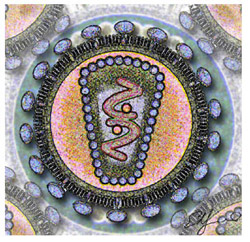
AIDS is caused by a virus—human immunodeficiency virus (HIV). This virus is spread through blood-to-blood contact. It works by destroying the helper T cells that are so important in immunity. When T cell levels are lowered, the efficiency of the immune system is compromised. There are no flags to show immune system cells where to go to attack. Thus, the immunodeficiency has now been acquired.
One of the problems with HIV is that this virus replicates and mutates quickly. The mutations make it hard to develop a viable vaccine. In addition, HIV is known as a “retrovirus,” which means it is in RNA form and it inserts a copy of its RNA into the host cell’s DNA. The result is that the host cell is told to make more copies of the HIV RNA and sends it out to other cells so they can also become infected. In doing this, HIV is able to create many copies of itself. Since it is in RNA form rather than DNA, HIV is more difficult for the body to fight.
When a person develops AIDS from HIV, all of the body’s systems are now in danger. The body’s immunity becomes more and more depressed until it is almost nothing and this is when opportunistic pathogens invade. These pathogens are usually not a problem for a normal immune system. But to a person with a lowered immune system, they can be fatal.
HIV is the virus that causes AIDS. AIDS allows for the suppression of the immune system. AIDS does not kill directly.
The cells in the body have surface proteins on the cell membrane. Among these proteins, there are some large proteins called major histocompatibility complex, or MHC markers. These markers are unique to each body’s cells. So the body’s white blood cells tend to ignore cells with these markers on them. Invader’s cells also have markers on them. These markers are called antigens. These antigens are not ignored by the body’s cells and are recognized and dealt with, by killing the invader, if possible.
Most of the invaders have what is known as immunogenicity. When this is the case, these invaders are known as complete antigens. In addition to immunogenicity, a complete antigen also has the ability to react with the antibodies produced by the activated lymphocytes.
There are some small molecules that when combined with the body’s proteins can become recognized by the body as an invader. These small molecules are known as incomplete antigens, or haptens. Some examples of haptens are some allergens such as pollen, laundry detergent, or poison ivy. When the body reacts against these haptens the immune response is usually unnecessary and potentially harmful to the host.